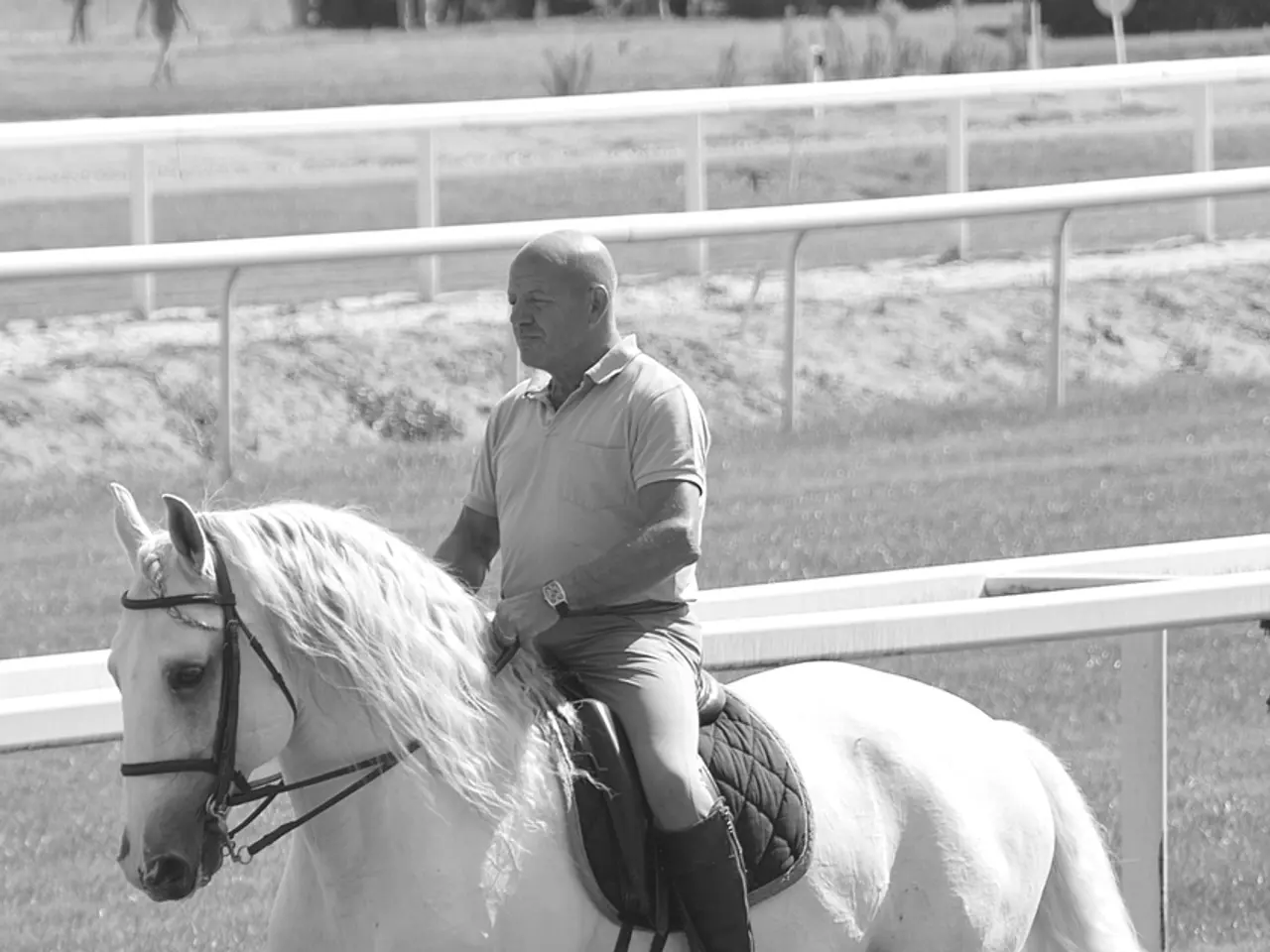Horse Cribbing Management: Strategies for Addressing Chronic Biting Behavior in Equids
Cribbing, a stereotypic behaviour in horses, is a concern for many horse owners due to its potential health risks and associated behaviours. This article aims to provide a comprehensive overview of cribbing, its causes, and management strategies.
Cribbing typically begins in young horses, around 20 weeks old. The exact cause of cribbing is not fully understood, but research suggests that diet, genetics, stress, boredom, and copying another horse may play a role. For instance, horses that have more grain in their diet have an increased risk of developing cribbing, while increased roughage in the diet has been associated with a decreased risk.
One of the most challenging aspects of preventing cribbing is the lack of understanding of its exact cause. Cribbing rates are reduced when cribbers have access to turnout and companion horses, but cribbing behaviour is not entirely eliminated. Cribbers should have access to turnout and the opportunity to socialize with other horses.
Research on cribbing has been extensive. In 1994, a study published in Applied Animal Behaviour Science looked at the effect of diet on cribbing behaviour and plasma β-endorphin in horses (Gillham et al., 1994). Another study, published in 2014, focused on crib-biting and its heritability in Finnhorses (Hemmann et al., 2014). More recent studies have explored the physiological consequences of crib-biting (Freymond et al., 2015) and the effects of various anti-crib devices on behaviour and physiology of crib-biting horses (Albright et al., 2016).
Cribbing is a risk factor for several health issues, including colic, stomach ulcers, equine motor neuron disease, and temporohyoid osteoarthropathy. It's important to note that cribbing horses can be harder keepers because they spend time cribbing instead of eating, and the act of cribbing requires energy.
Feeding management can help mitigate cribbing behaviour. Providing more forage and less grain, as well as eliminating cribbing surfaces, taste deterrents, electrification of cribbing surfaces, pharmaceuticals, oral antacids for foals, surgery, and increasing the time spent eating, are all effective methods, although some require intensive management.
The cribbing collar is the most used method for preventing cribbing. It consists of two straps and a piece of galvanized steel under the horse's neck. However, once cribbing behaviour is established, it is unlikely that a horse will ever completely cease to exhibit the behaviour.
Other factors associated with a reduced risk of cribbing include more time spent outside, social contact with other horses, and keeping foals solely on grass through the weaning process. Feeding concentrate to young horses immediately after weaning was associated with a four-fold increase in the manifestation of cribbing.
It's worth noting that horses learning cribbing behaviour from horses that already crib has not been substantiated. Cribbing has not been reported in free-ranging feral horses, suggesting that it may be a behaviour associated with domestication and management practices.
In conclusion, understanding and managing cribbing in horses requires a combination of dietary management, environmental enrichment, and preventive measures. By providing a balanced diet, ensuring access to turnout and social interaction, and implementing preventive measures such as the cribbing collar, horse owners can help reduce the risk of cribbing and improve the overall health and wellbeing of their horses.








